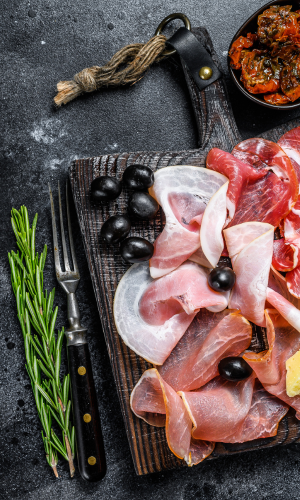All our products are MADE IN ITALY
The White version of the F 250 Flywheel Slicer enhances any environment with a clean and refined style. Ideal for those who love aesthetics without sacrificing high-level performance, this machine guarantees precise, thin and uniform cuts of cured meats and hams. Manual operation offers maximum control over the cut, while the quality materials and easily removable parts ensure hygiene and durability over time.

Today, manual flywheel slicers continue to be popular, especially among cooking enthusiasts and professionals looking for maximum control over their cuts. Modern models combine the appeal of vintage design with cutting-edge technology. Many contemporary slicers feature ergonomic improvements, advanced safety systems, and easily removable components for easier cleaning. More recent innovations include the use of lightweight, durable composite materials, the integration of automatic sharpening systems, and the adoption of more compact designs to fit even the smallest kitchens. Despite these developments, the basic principle of flywheel slicers has remained the same, maintaining the tradition of precision and quality of the cut.
FAC professional flywheel slicers are renowned for their precision and reliability . However, to ensure optimum performance and a long life, it is essential to pay attention to maintenance and care of the appliance. Regular maintenance not only maintains the quality of the cut, but also ensures the safe and efficient operation of the slicer. When not in use, cover the slicer to protect it from dust and debris. If possible, store the appliance in a dry, moisture-free place to prevent rust and other damage. A well-maintained slicer not only provides precise, high-quality cuts, but is also a long-lasting investment in your kitchen. Take the time to care for your slicer and enjoy the superior performance it can provide. It is recommended to use the sharpener regularly, following the manufacturer's instructions, to ensure precise and uniform cuts. Proper sharpening not only improves the quality of the cut, but also reduces wear and tear on the machine.
| TECHNICAL FEATURES
|
||||
| F 250 VO STD | F 300 VO STD | F 350 VO STD | F 370 VO STD | |
| Lama | 25 cm | 30 cm | 35 cm | 37 cm |
| Cutting thickness | 0 ÷ 2.3 mm | 0 ÷ 2.5 mm | 0 ÷ 2.5 mm | 0 ÷ 2.7 mm |
| Useful cut | 18.5 x 15 cm | 23 x 18 cm | 27 x 24 cm | 27 x 25 cm |
| Machine measurements | 52 x 68 x 51 cm | 60 x 72 x 74 cm | 71 x 87 x 80 cm | 71 x 87 x 80 cm |
| Weight | 33 kg | 45.5 kg | 81 cm | 81 cm |
| Machine material | painted aluminum | painted aluminum | painted aluminum | painted aluminum |
| Blade material | Stainless steel | Stainless steel | Stainless steel | Stainless steel |
| Sharpener | ✔ fixed | ✔ fixed | ✔ fixed | ✔ fixed |
| Certifications | Professional CE | Professional CE | Professional CE | Professional CE |




